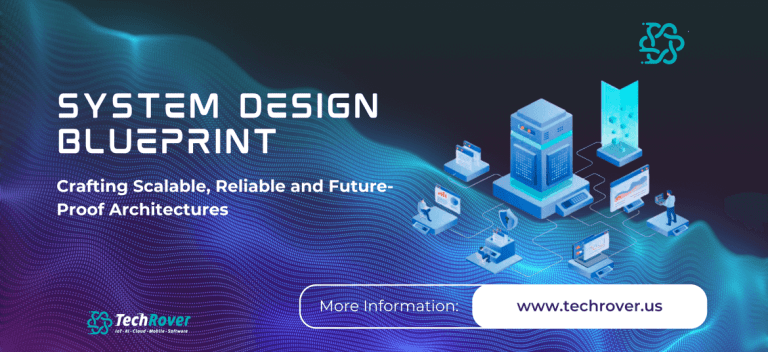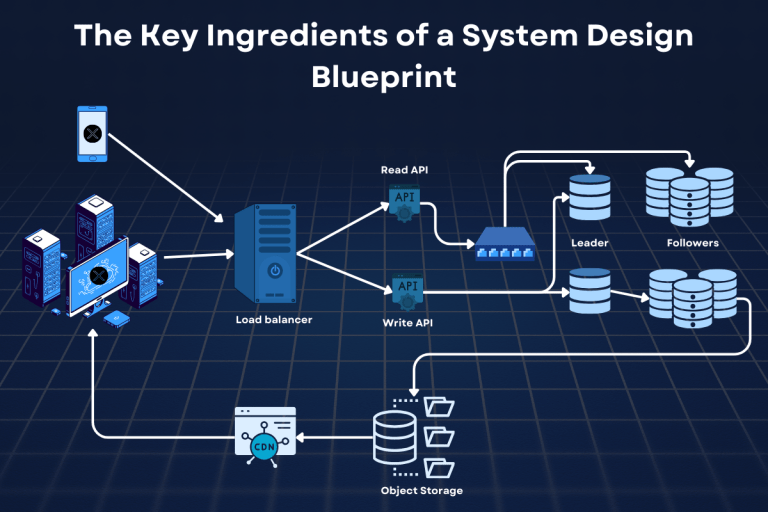Building Software That Lasts: The Power of a System Design Blueprint

Let’s be honest, building software that can handle the demands of today’s world is a real challenge. It’s not just about writing code; it’s about having a solid plan—a System Design Blueprint—to make sure everything works smoothly, scales effortlessly, and stays reliable. Think of it as the foundation of your software project—get it right, and you’re set up for success.
This post dives into the essential ingredients, the best ways to approach it, and some handy tips for creating these crucial blueprints.
Why a Blueprint Matters: Setting the Stage for Success
A System Design Blueprint is the software equivalent of architectural plans. Imagine building a house without any plans! it would be chaotic and prone to problems. Similarly, in software development, a solid blueprint is vital for avoiding costly mistakes and performance bottlenecks. It helps you achieve:
- Scalability: Handling tons of users and mountains of data without breaking a sweat.
- Reliability: Keeping your application up and running smoothly, minimizing those dreaded downtimes.
- Efficiency: Making the most of your resources and squeezing every bit of performance out of your system.
- Future-Readiness: Building a system that can easily adapt to new technologies and changing business needs—because let’s face it, things change fast!
The Key Ingredients of a System Design Blueprint: What Goes Into It?
A good blueprint covers a few key areas:
1.High-Level Architecture: The Big Picture View
- Core Modules: The essential building blocks, like user interfaces, APIs, and
databases. - Integration Points: How your system talks to other services and tools.
- Communication Methods: How different parts of your system chat with each other.
2.Service Layer Architecture: Structuring Your Core Logic
- Architecture Style: Choosing between one big application (monolith) or lots of
smaller, independent services (microservices). - API Design: Choosing how other systems will interact with yours (REST, GraphQL,
gRPC).
3.Data Flow Mapping: Following the Data’s Journey
- Data Inputs: Where your data comes from—user actions, external systems, etc.
- Data Processing Stages: The steps your data goes through to be transformed.
- Storage and Outputs: Where your data lives and how it’s presented to the world.
4.Scalability and Resilience: Staying Strong Under Pressure
- Horizontal Scaling: Adding more servers to handle more traffic.
- Load Balancing: Distributing traffic evenly across your servers.
- Fault Tolerance: Building in ways for your system to keep working even if parts of it fail.
5.Database Design: Keeping Your Data Organized
- Database Type: Choosing the right database for the job—SQL or NoSQL.
- Design Considerations: Optimizing things like indexing and partitioning for better
performance. - Replication: Making sure your data is safe and available even if something goes
wrong.
6.Security Considerations: Keeping Things Safe and Sound
- Data Protection: Encrypting your data to keep it safe from prying eyes.
- Access Controls: Managing who can access what in your system.
- Compliance: Following all the necessary rules and regulations.
7.Monitoring and Observability: Keeping an Eye on Things
- Analytics Dashboards: Checking key metrics to see how things are performing.
- Logging: Keeping detailed records to help with troubleshooting.
- Alerts: Getting notified if something goes wrong.

Best Practices: Some Tips from the Pros
- Modularity: Break your system down into smaller, manageable pieces.
- Scalability Planning: Think about growth from the very beginning.
- Simplicity: Keep things as simple as possible.
- Thorough Testing: Test everything thoroughly before you launch.
- Comprehensive Documentation: Write everything down!
Techrover™ Solutions Approach: Building Blueprints That Deliver
Crafting a truly effective system design requires a deep understanding of your unique business needs. At Techrover™, we believe in a collaborative and hands-on approach. We start by immersing ourselves in your specific challenges and goals. This involves:
- Collaborative Workshops: Working closely with your team to align on objectives and gather crucial insights.
- Iterative Prototyping: Refining the design through prototyping and incorporating your feedback.
- Leveraging Our Expertise: Our team brings years of experience in building scalable and efficient systems.
- Needs and Scalability Assessment: Conducting a thorough analysis to ensure the blueprint aligns with your long-term vision and business drivers.
This approach ensures that we deliver a blueprint tailored to your specific requirements, not just a generic template. We’ve empowered numerous organizations to build systems that can handle anything thrown at them.
In Summary:
A System Design Blueprint is a crucial investment in your software’s future. By focusing on scalability, reliability, security, and efficiency, you can build applications that are ready for anything.

Pingback: Power Of KISS In Your Solutions Architecture | 2025